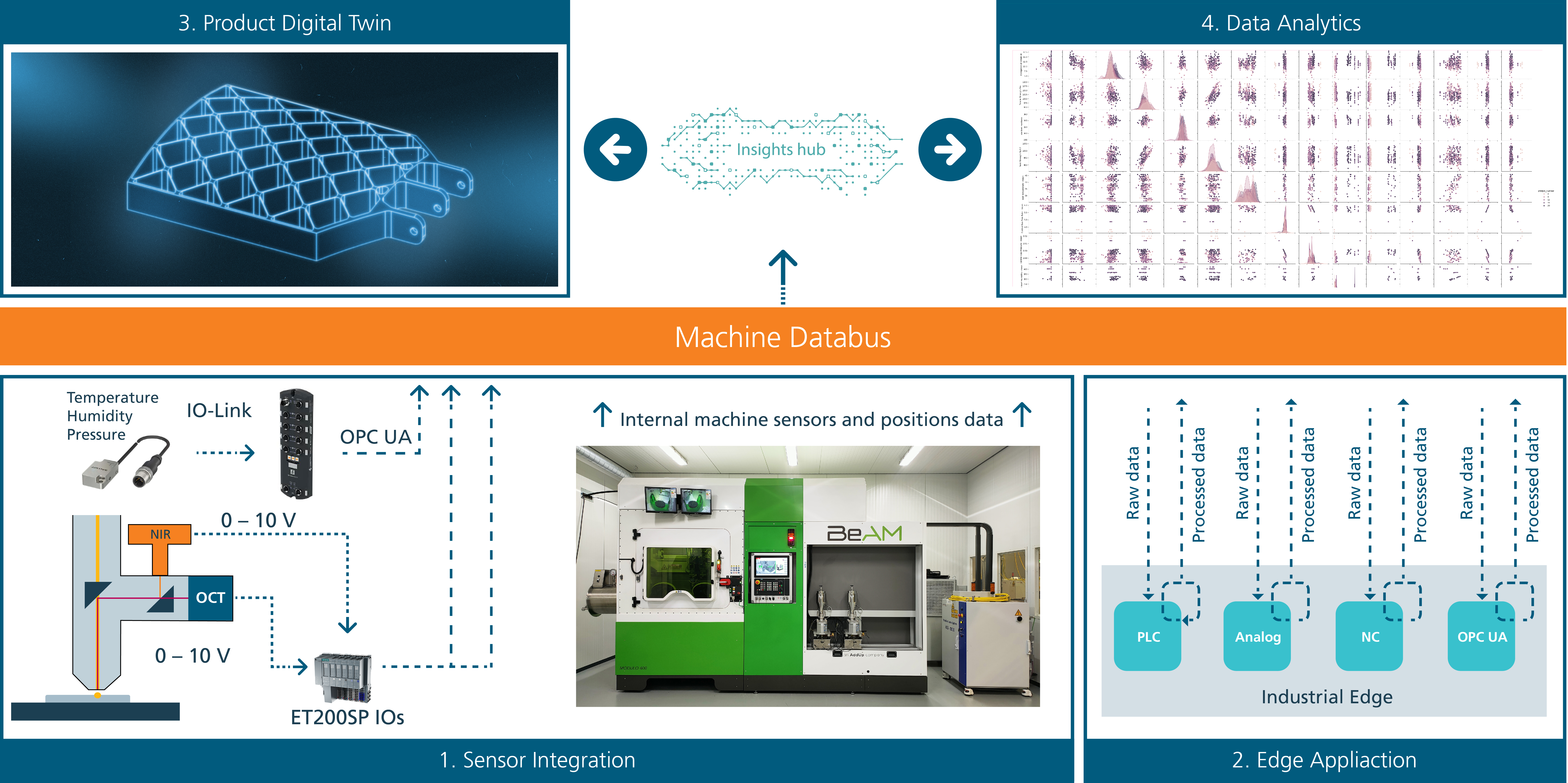Digital twins can significantly enhance efficiency and quality in additive manufacturing. By systematically capturing and analyzing all relevant production data, they provide a comprehensive understanding of the entire manufacturing process. This includes the integration of sensors and the manual entry of non-automatable data to create a complete dataset.
Digital Twin
Our approach
- Comprehensive data collection: Integration of sensor data and manually recorded information for a complete database
- Continuous process optimization: Automated improvement of processes through data analysis and AI-driven simulations
- Early error detection: Identification of potential sources of error before production
- Increased stability and accuracy: Optimization of components and processes for higher quality

Projekte
BigDataLMD: Leveraging Digital Twins to Optimize Additive Manufacturing Processes
The Industry 4.0 initiative has paved the way for extensive digitalization and virtualization in manufacturing processes. In this landscape, the digital twin— a virtual representation of a system, process, or product — can greatly improve both efficiency and product quality. By systematically gathering and analyzing all relevant production data, digital twin models offer a thorough understanding of the entire manufacturing workflow.
In the industry-funded ‘BigDataLMD’ project, Fraunhofer IAPT has created a data-pipeline infrastructure and accompanying software tools to facilitate the digitalization of a powder-based laser metal deposition system. Utilizing SINUMERIK Edge and in-situ optical sensors, the pipeline captures machine parameters and process-related data. A product digital twin is then generated in Siemens Insights Hub® for data analysis and identification of key influencing factors. Additionally, the software tool enables users to gather metadata from subsequent quality measurement steps. From the analyzed data, actionable recommendations are developed to enhance the stability of the powder-laser-DED process.
One of the primary benefits of the digital twin is the ongoing and automated optimization of processes. Through data- and AI-driven simulations, end-users can make accurate predictions and detect potential errors early, thereby enhancing the stability and precision of additively manufactured components.

HyFAS: Enhancing Precision in Hybrid Additive Manufacturing
The research project HyFAS aims to industrialize and automate the hybrid laser powder bed fusion (LPBF) technique for metallic components. This innovative approach seeks to enhance manufacturing efficiency, reduce costs, and improve the quality of hybrid parts by addressing integration challenges between conventional and additive processes.
LPBF is renowned for its resource efficiency and capability to create intricate metallic components. However, precise alignment of additive structures onto pre-formed parts is often problematic, leading to failed prints. To improve the accuracy of the alignment, a stereo vision system has been developed for seamless integration into any LPBF machine. This system accurately measures the 6D pose of base components, ensuring proper alignment and enabling additive parts to be printed with a positional accuracy of 0.1 mm.
Moreover, the stereo system facilitates partial automation of substrate plate levelling and powder level measurement, enhancing operational efficiency. The successful implementation of this technology paves way for high-precision and high-performance production, thereby unlocking new opportunities in hybrid additive manufacturing.
KiRo3D: Optimizing Robot-based 3D Printing Processes Using Reinforcement Learning Agents
As part of the KiRo3D research project, a 3D printing robotic cell has been digitalized. This involved integrating a pyrometer and a CMOS camera for real-time melt pool monitoring via a beam splitter in the optical path. Coupled with the RSI interface of the KUKA robot, the process data is efficiently captured and stored in a database.
Additionally, a comprehensive process monitoring tool has been developed, empowering machine operators to oversee the process in real-time. For subsequent analysis, a web-based analytical tool has been created, enabling visualization and evaluation of process data post-build. This tool not only facilitates location-specific representation of sensor data (geomapping) but also supports dataset generation and training of machine learning models.
These models are utilized to train reinforcement learning agents, which incrementally learn the process characteristics from historical data. Ultimately, these agents can be deployed within the process to automate the control of process parameters. This approach stabilizes the process, enhances product quality, minimizes scrap, and reduces production costs.


